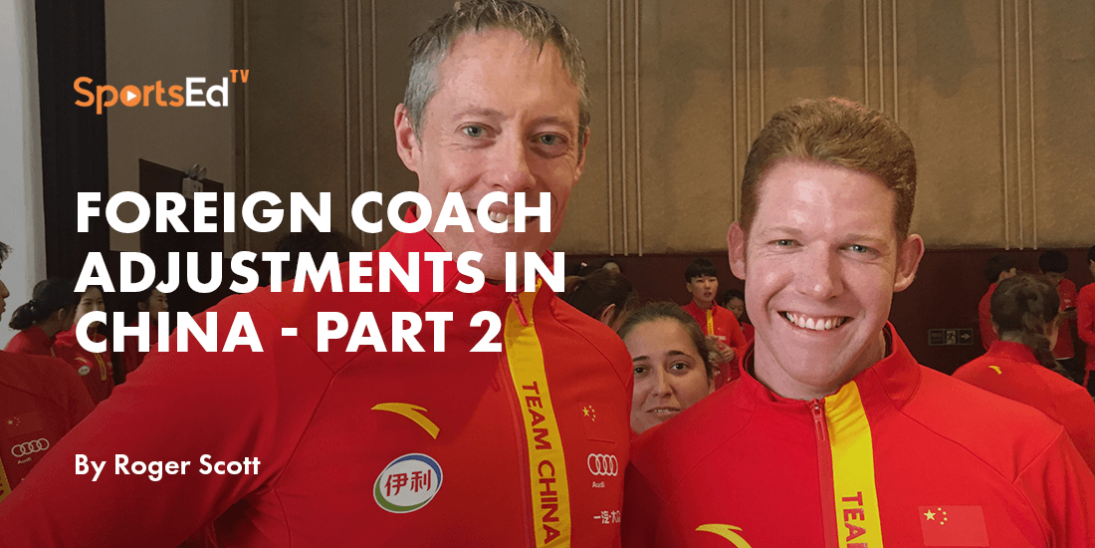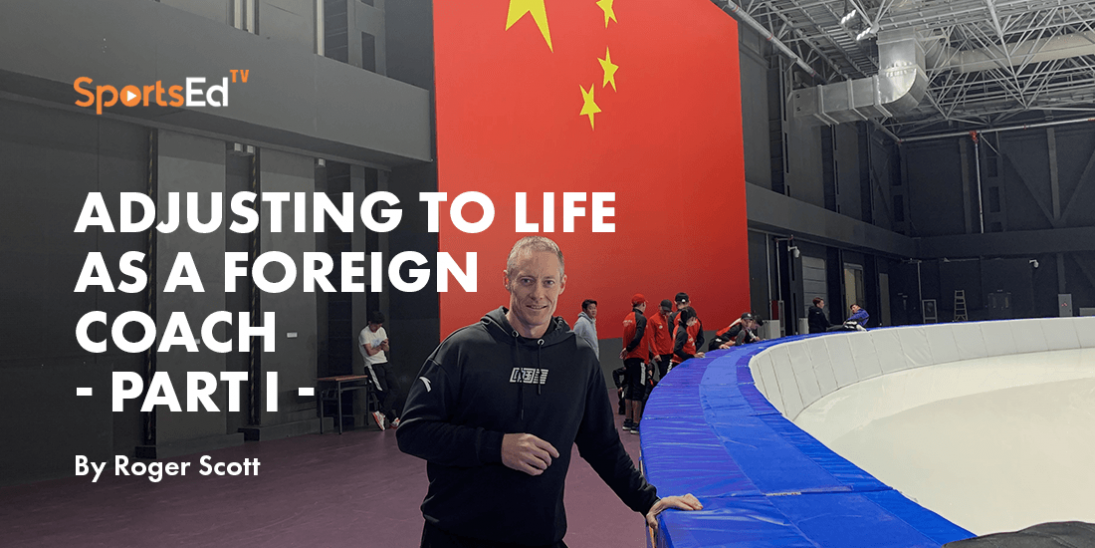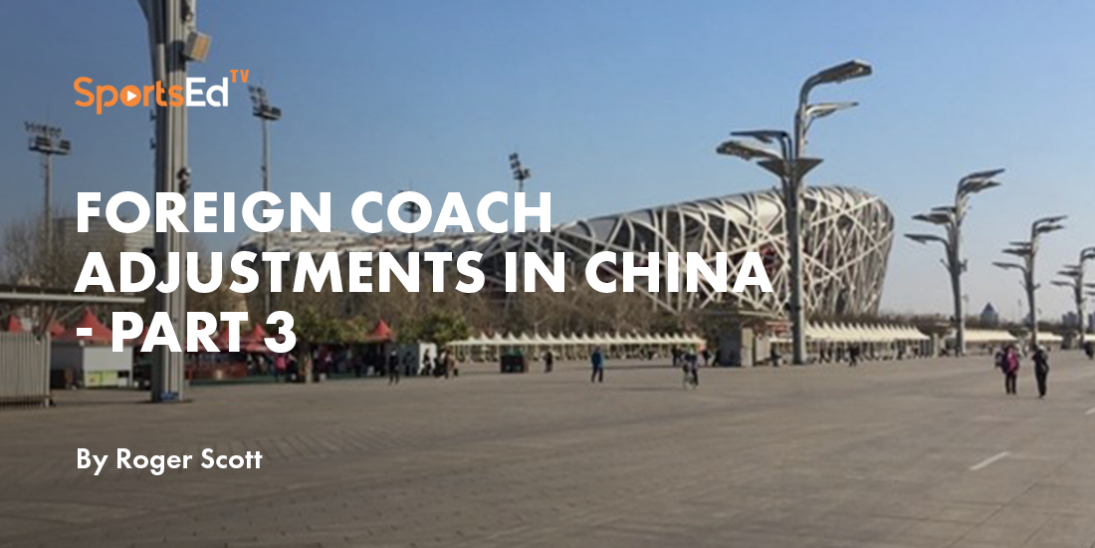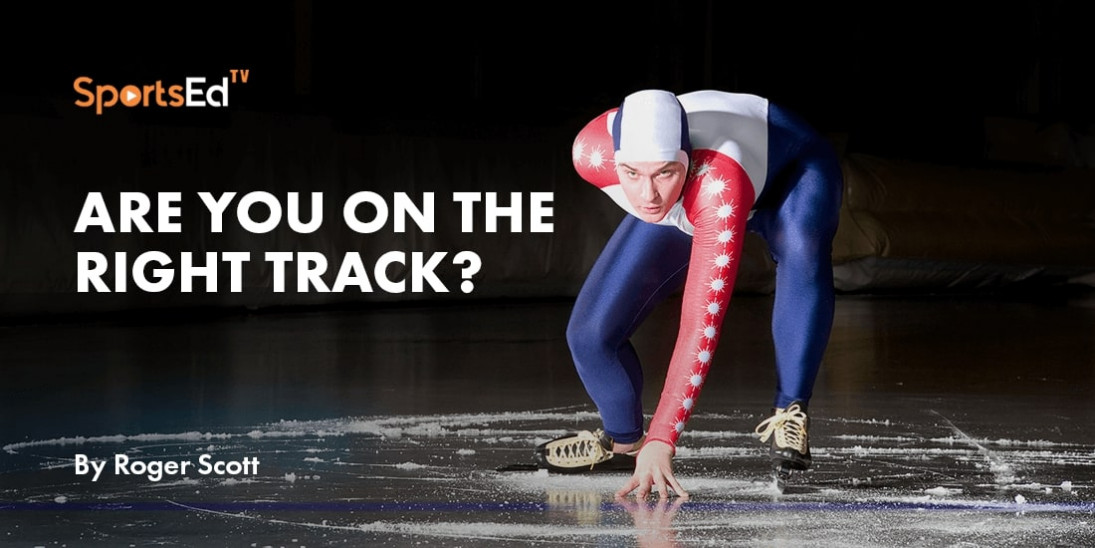Speed Skating
Welcome and thanks for visiting...

The Need For Speed
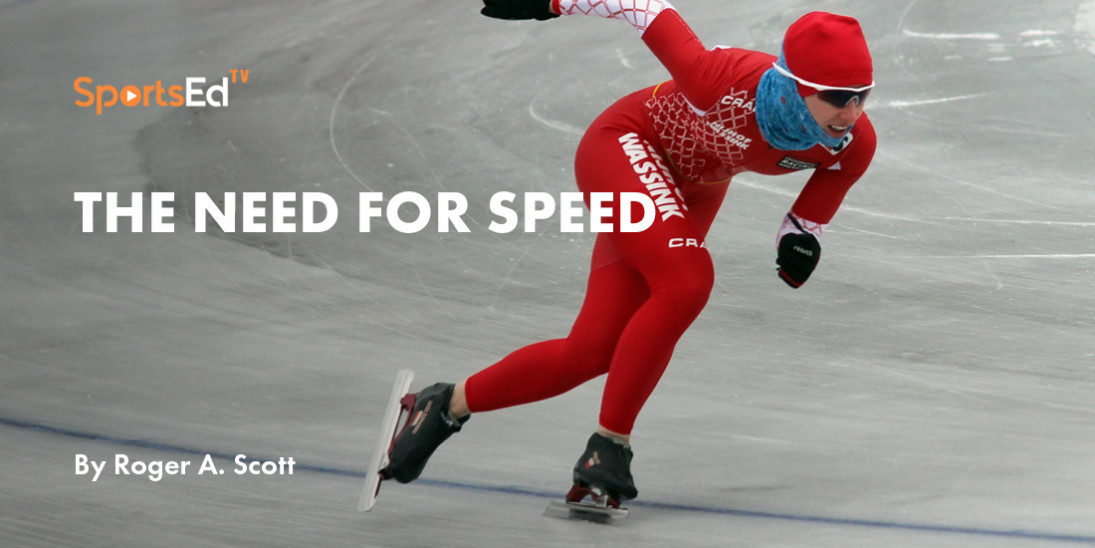
THE NEED FOR SPEED
SPEED DEVELOPMENT THAT WILL IMPACT THE START OF A 500M RACE
(Both in Long Track & Short Track)
“THE STARTING LINE”
In the sport of Speed Skating (both in Long Track and Short Track), a 500-meter race requires great reaction time with a 100-meter track sprinter’s mindset. My background with speed development (youth, collegiate and professional athletes) allowed me to add some value to the short distance specific Chinese National Long Track skaters as well as their Short Track skaters. A Speed & Agility Development mentorship with XPE Sports founder Tony Villani made a big difference. Tony is one of the best Sports Performance Coaches in America and highly sought after by those college football players who prepare for the NFL Combine each winter in Fort Lauderdale, Florida. I am fortunate to have a professional relationship of nearly 15 years with him. One of the basic, yet critical pieces learned that could be applied to speed skaters was simply “knee up, heel up, toe up” (also referred to as toe-loaded). This article will focus upon speed training practices that will make a difference in the beginning stages of a 500-meter race in both long and short track competitions.
I. BIOMECHANICS
Results from various researched studies of both Long and Short Track at the international level have established:
- SHORT TRACK – “The initial 14m (approx. 2.5 sec.) start “has substantial influence on a 500m short track race outcome at the international level”
- SHORT TRACK – “The Relationship Between Rank Position Entering First Corner (RPEFC) is an important aspect on a 500m race outcome in elite short track”
- SHORT TRACK – Comparing short track start and dry-land sprint literature…. “the findings suggest a close similarity in sagittal hip and knee kinematics, and some similarity exists in movement speed”
- SHORT TRACK – “The short track start can be effectively trained through a supervised dry-land sprint start intervention”
Examples of Short Track Start (3 photos)
SHORT TRACK - PHOTO 1 - START LINE
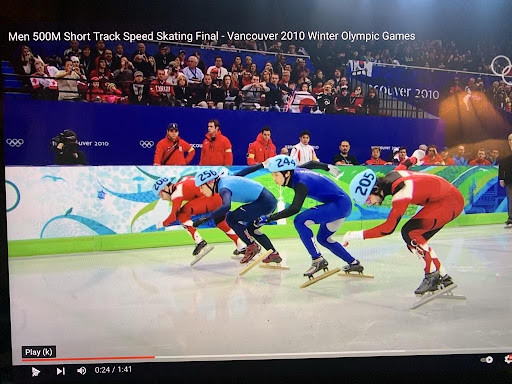
SHORT TRACK - PHOTO 2 – RIGHT KNEE UP / FORWARD LEAN

SHORT TRACK - PHOTO 3 – RIGHT LEG PUSH OFF / GLUTE EXTENSION

- LONG TRACK – The first strokes (first 4 seconds) of the start of male and female 500m long track races appeared to be “performed with a running-like technique” (measured during the 1988 Winter Olympics)
- LONG TRACK – In the first 100m of the 500m long track race, “the effectiveness of the push off appears to be more important than the observed high power output levels”
Examples of Long Track Start (2 photos / 1 video)
LONG TRACK – PHOTO 1 – START LINE

LONG TRACK – PHOTO 2 – LEFT KNEE UP
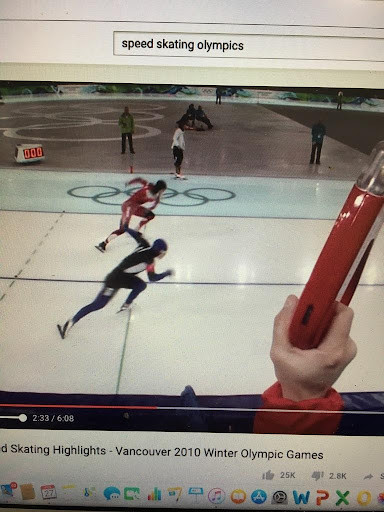
LONG TRACK – VIDEO 1 – 1ST 100 METERS
II. DRILLS
The off-ice (dry-land) speed development training for a specific group of 7 male Long Track Speed Skaters included 4 areas of emphasis:
- Knee Up / Heel Up / Toe Up
- Forward Lean
- Accelerations
- Hamstrings
Please know that these drills can obviously be used in a variety of sports to develop proper speed mechanics. They don’t represent every single aspect of speed training but worked well for my specific group of athletes. Their 500-meter ice-time comparisons (exactly 1 month apart on the same ice surface) reflect improvement. Please see videos and a brief description below for each of the 4 areas.
A. Knee Up / Heel Up / Toe Up (5 videos)
VIDEO 1 – WALL DRILLS
On a flat hard surface that will support your full body weight, setup at approximately a 45–50-degree angle with both arms fully extended. Raise one leg with the knee up (bent), heel up, and toe up (ankle flexed).
Remain stationary until being cued to start.
- Begin with “single” reps by explosively alternating high knee positions one at a time, when cued to do so
- “Double” reps: explosively alternating high knee positions two at a time, when cued to do so (1-2).
- “Triple” reps: explosively alternating high knee positions three at a time, when cued to do so (1-2-3).
VIDEO 2 – INCLINE SPRINTS ON THE “SHREDMILL” TREADMILL
This particular treadmill in this video is self-powered. It is called the “Shredmill” and developed by XPE Sports (located in Fort Lauderdale, Florida) Owner/Founder Tony Villani. The incline I am running at in the video is set at 22 degrees. It really forces you to work on stride length (knee-up, heel-up, and toe-up).
VIDEO 3 – INCLINE SPRINTS ON AN OUTDOOR HILL
The incline my collegiate baseball client is running at in the video is on an outdoor hill, which is a softer surface. Like the treadmill, it really forces you to work on the knee-up, heel-up, and toe-up mechanics. 5-10 seconds per sprint (various length) x 8-10 sprints. It is best to wear some type of cleats on the grass hill.
VIDEO 4 – FOAM PAD RUNNING – HIGH KNEES
I first saw this fun drill in Tony Villani’s XPE Sports training academy. Running in place, this works on high knee emphasis. The gymnastics type landing pad creates a “sinking” unstable surface which makes it challenging to get the knees up in the air. 10-15 seconds per set. 3-6 sets.
VIDEO 5 – HIGH KNEES INTO A SPRINT - LADDER
This combines high knee emphasis and linear acceleration. Using a speed/agility floor ladder, moving forward, take 2 explosive high knee steps (1 per each leg) per box, and then accelerate into a full sprint after completing the final box on the ladder. Also don’t forget the knee-up, heel-up, toe-up mechanics. 6-8 ladder runs per set.
B. Forward Lean (2 Videos)
VIDEO 1 – PUSHUP START – RUBBERIZED TRACK
Starting in a prone position flat on your stomach, push yourself up off the ground to your feet and sprint forward in a straight line. Your body will already be in a falling forward position which is your forward lean. Continue to emphasize knee-up, heel-up, and toe-up as well. 10-15 yards (9-14 meters) in total approximate distance.
VIDEO 2 – BUNGEE CORD RESISTANCE
With a partner resisting you with a bungee type of cord, begin with a forward lean-fall-run sequence. Continue to emphasize knee-up, heel-up, and toe-up, continuing to run in a forward leaning position throughout. Focus on a high number of repetitions (alternating knees up) during each run of 10-15 yards (9-14 meters), and NOT speed (running point A to B). Do this 4-6 times per overall set.
C. Accelerations (2 Videos)
VIDEO 1 – SINGLE LEG FIRING INTO A SPRINT – LADDER
Using a speed/agility floor ladder, run forward slowly on only one side of the ladder. When on the left side, alternate explosive right knee firing up at each ladder box, while keeping the left knee down lower. When you get to the end of the ladder, take off into a full sprint (short distance). Repeat the opposite leg (left knee firing) when on the right side of the ladder, followed by a short sprint. 3-4 times on each side of the ladder.
VIDEO 2 – PARTNER RESIST-CHASE-TAG – MANUAL RESISTANCE - RUBBERIZED TRACK
2 athletes face one another. One attempts to accelerate in a forward lean position, while the partner manually resists and keeps him or her running in place for a count of 5. At that point the partner resisting releases and gives a gently push against the running athlete in order to create a small separation between the 2. The partner who was resisting then turns around and sprints straight ahead for a specified distance (approximately 20-30 yards / 18-27 meters) while the other chases and attempts to catch him or her and tag them from behind.
D. Hamstrings (1 Video)
VIDEO 1 – SUPERSET – PHYSIOBALL PRONE KICKS / FOAM PAD BUTT KICKS
This is a combination of 2 drills performed back-to-back. It emphasizes fast twitch hamstring movement, simulating the high intensity anaerobic energy system that is required in a 500-meter sprint race. Each is 10 seconds in length. Despite no actual resistance, they both generate an exceptional amount of lactic acid (the burn) in the muscles. Repeat the superset 2-3x.
- Physioball Prone Kicks – Lay on your stomach and have a partner sit on a physioball that is placed on your low and glute region (in order to stabilize the ball). Alternate heel kicks as fast as possible into the physioball for approximately 10 seconds.
- Foam Pad Butt Kicks – Opposite to high knee running, use the same foam pad and perform alternating heel kicks straight up into your glute region, as fast as possible, for approximately 10 seconds.
III. TRAINING EQUIPMENT EXAMPLES – See previous videos
The equipment mentioned here is what we had access to. Fortunately, we had a lot to choose from at our locations. But you don’t need a lot of money to get the job done.
- Bungee Cord Resistance
- Foam Gymnastics Landing / Crash Pad
- A Sturdy Wall
- Agility Ladder
- Physioball
- Sled with Weight Plates (for pushing forward – not mentioned above)
IV. TRAINING LOCATIONS – See previous videos
The geographical locations for this specific speed development training took place in both Calgary (Canada) and Beijing, China. But of course, training can be anywhere with a proper surface (rubber track, grass, field turf, etc) and appropriate equipment previously listed.
- Indoor / outdoor rubberized track
- Outdoor Hill / Incline (or a controlled environment - treadmill)
V. PAST PROVEN RESULTS
From 2 Long Track competitions in 2019, 1 month apart, on the exact same ice surface (Olympic Oval at the University of Calgary – Alberta, Canada). – All results can be found at Speedskatingresults.com
**PR = Personal Record (Best)
- August 24, 2019: Summer Classic – Calgary, AB (Olympic Oval)
- September 20, 2019: Fall Classic – Calgary, AB (Olympic Oval)

If needed, the results for each of my athletes above can be verified at the links below:
Xu Chenglong å¾æ¿é¾. https://speedskatingresults.com/index.php?p=17&s=30555
Yeertai Helan å¶å°å¤ª åå ° https://speedskatingresults.com/index.php?p=17&s=69082
Wang Song çæ· https://speedskatingresults.com/index.php?p=17&s=45230
Gao Pengfei é«é¹é£ https://speedskatingresults.com/index.php?p=17&s=34342
Zhou Bin å¨æ https://speedskatingresults.com/index.php?p=17&s=39105
Liu Zehao åæ³½æ https://speedskatingresults.com/index.php?p=17&s=63733
Zhu Jiafan æ±ä½³ç https://speedskatingresults.com/index.php?p=18&s=24383&i=0
“THE FINISH LINE”
The challenge of working with the Long Track speed skaters for 500-meter speed development was due to the various longer distances that they skated in competition. Those distances were 1000, 1500, 3000, and 5000 meters (the 10,000m distance is only in certain bigger competitions). So, there was a balance between fast twitch/explosive and slow twitch endurance that had to be achieved during our training. In Short Track, despite distances ranging from 500 to 3000 meters, there is less of an aerobic energy system requirement due to the smaller ice surface and more extreme corner turns. I think it goes without saying, it is a little easier to plan a speed development program for Short Track skaters at 500 meters.
During my year-long experience with Chinese National Speed Skating, I was fortunate to work with the 7 male Long Track skaters listed above specifically during a specific 4-week period between competitions that took place on the exact same ice surface (Calgary Olympic Oval). Usually after a competition, you move on to the next city and a new ice surface, of which there are many differences. The Long Track team at that time did not have a permanent home training oval in Beijing, which is why I took advantage of comparing their improvements during that 4-week time window on the same ice surface. The fact that 6 of these 7 male skaters showed some type of improvement in their 500-meter race times (2 with personal bests) despite also training for other long distances as All Round skaters, told me that what we were doing off the ice was definitely working.
